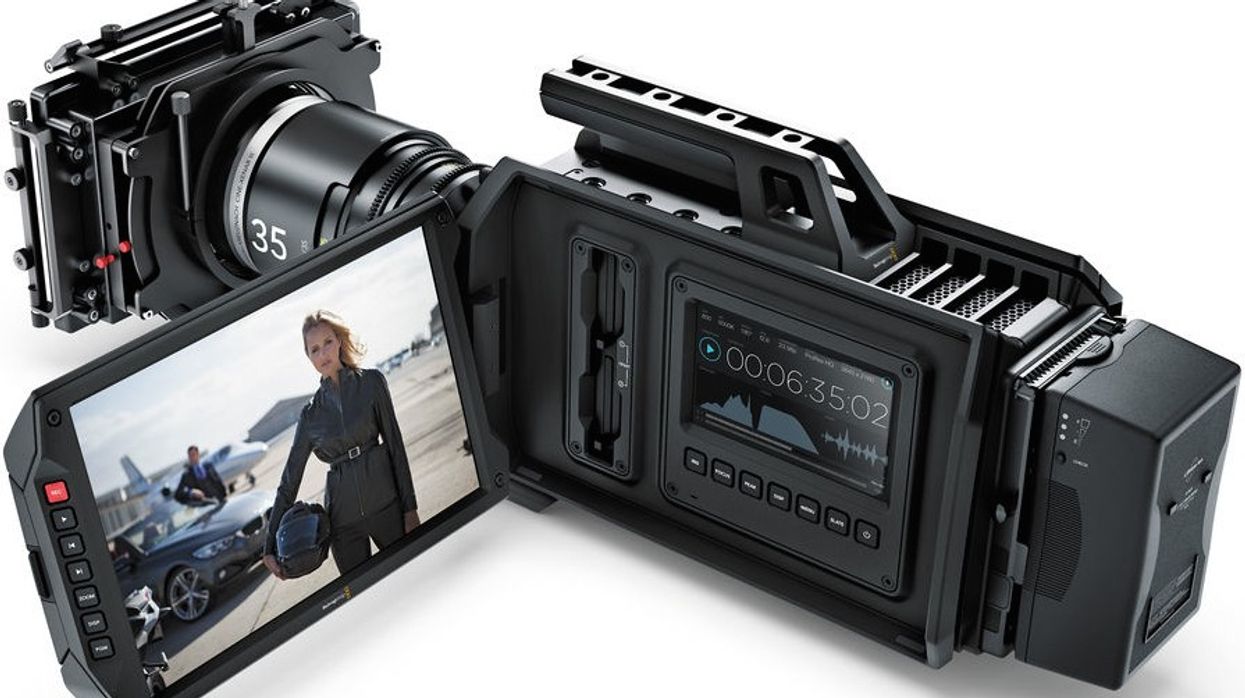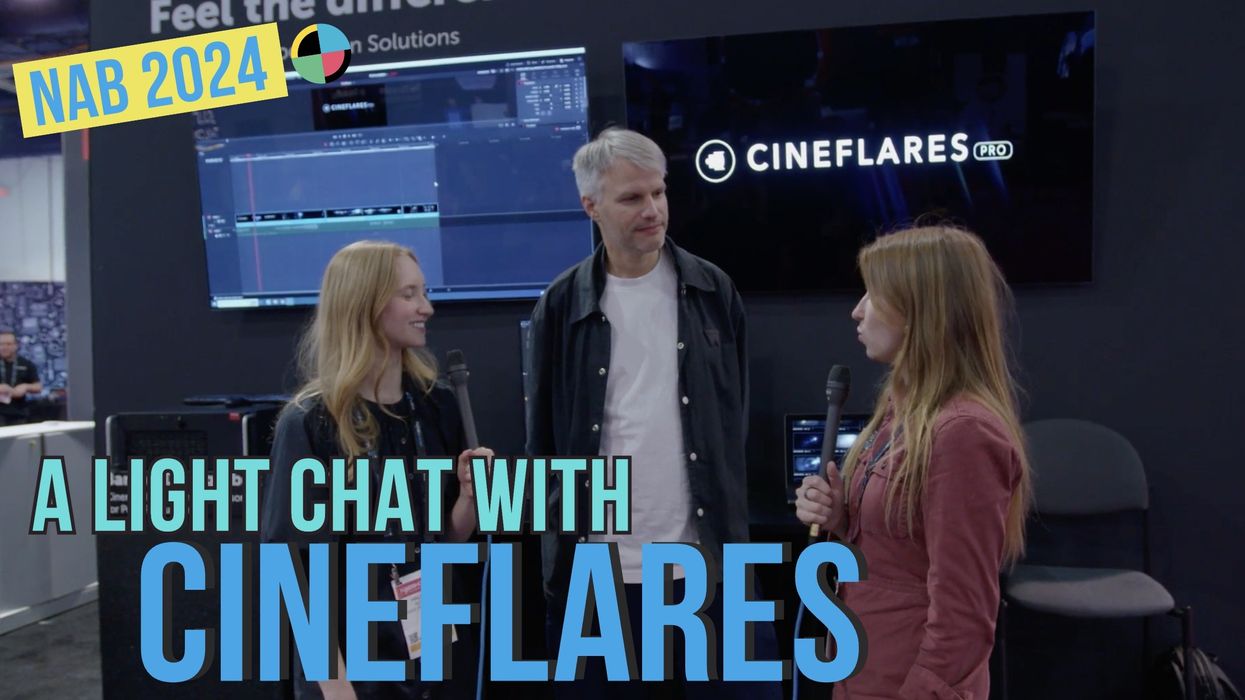Blackmagic CEO Grant Petty Discusses URSA & Image Issues with Production Camera 4K

A little over two years ago, Blackmagic Design completely disrupted the cinema camera market, and changed expectations about how much we should be paying for excellent image quality. Their goal with the first 2.5K Cinema Camera was to make something with as much flexibility in post as possible, and would be a companion to cameras like the Canon 5D Mark II -- which is why they chose the Canon EF mount. They haven't stopped with just one camera model, as they have since introduced the Pocket Cinema Camera, Production Camera 4K, and the URSA 4K Digital Cinema Camera, which features interchangeable sensors. At the recent NAB show, I interviewed Blackmagic CEO Grant Petty and asked him all sorts of questions about their camera line, firmware updates, and what he thought about the image issues some people have experienced with the Production Camera 4K.
Some of my questions have since been answered thanks to the 1.8 firmware update released last week, but there are still other additions, like card formatting, that have not yet been added. Here is the full audio interview with Grant Petty:
Here are the timestamps of specific questions if you want to jump ahead:
- 2:58 -- The 2.5K camera was created with image quality as a priority, not final cost
- 11:10 -- Higher speed sensor for the URSA may or may not be available by the ship date, but higher frame rates should come this year
- 13:31 -- The URSA sensor blocks aren’t really made to be switched out every day
- 14:26 -- Using all of the current Blackmagic sensors with the URSA
- 15:20 -- Using the Super 16mm Blackamgic Pocket sensor with the URSA
- 17:02 -- Higher frame rates on the 2.5K and Super 16mm sensors with URSA
- 18:58 -- Why CFast Cards in the URSA?
- 20:23 -- SSD vs. CFast, and issues with SSD reliability
- 22:42 -- Hot swapping CFast cards with the URSA
- 23:39 -- URSA is not meant to be used on your shoulder with the 10” monitor flipped out
- 24:57 -- What about a Blackmagic EVF for the URSA?
- 27:05 -- Firmware updates: audio meters, histogram, card formatting in-camera
- 30:06 -- Image issues with Production Camera 4K
While Blackmagic has certainly been the least expensive option for the image quality offered, it's interesting that cost seems to be such a secondary consideration. The first Cinema Camera is still one of the cheapest RAW cameras out there, so it shows how far ahead the company was in terms of pushing higher IQ with their products.
The thing that has now been reiterated over and over again is how powerful the URSA 4K camera is under the hood. Since they are designing it for sensors that haven't been released yet, a lot of headroom has been built-in for higher resolutions and frame rates. This means that not only are higher speed 4K sensors possible, but the current 2.5K and 1080p sensors should be capable of higher frame rates if they are eventually paired with the URSA camera body. I have been told that these sensor packages should be available separately from the cameras, but we'll have to wait and see how that works out.
The company has also tried to use off the shelf media as much as possible, which is why they have not developed their own proprietary cards for the URSA, and have chosen CFast (just as the ARRI AMIRA has). Sustained card write speed is one of the biggest reasons they have moved in the CFast direction. SSD manufacturers tend to bend the truth a little when talking about write speeds, because these speeds aren't necessarily maintained over longer periods, which is an important statistic for camera media. CFast cards should have better and more reliable sustained write speeds, which is needed for 4K RAW and high frame rates and higher resolutions.
Part of their recent firmware update 1.8 for the current cameras was reworking the back-end so that they can more quickly deliver updates and new features. Now that much of that work has been completed, getting audio meters, a histogram, and card formatting in all of the cameras is only a matter of time. Even though these things are already in many other cameras, the company has limited resources, and chose to prioritize certain things in order to get the cameras out there. I think Blackmagic recognizes that they aren't going to get everything right at the beginning, so having the core features allows people to take advantage of the product and also let the company know what features they are really missing, and what features people really need.
I was only scheduled to talk with Grant for 15-20 minutes, but our talk went well over 30 minutes. Just before he had to leave for another meeting, I did ask him about image issues people are seeing with their 4K cameras, and he did not seem to think this was happening (though that could be for a number of reasons, and he may even have a different opinion at this point).
If you aren't familiar, some people have noted that they are seeing excessive fixed pattern noise in their 4K cameras (especially with log profiles), or even white dots on the image. I tested the Blackamgic 4K camera earlier this year, and while I did have the white dots at one point shooting in very cold conditions, I did not really notice the fixed pattern noise, except on areas that were underexposed. Here is a quick clip I shot at ISO 400 ProRes Film/Log (download the original ProRes clip over on Vimeo):
Fixed pattern noise is something that is present in all CMOS sensors, and is usually removed as a step in the image processing. The Apertus Open Source 4K camera project has been testing a similar (or maybe even the same) sensor as the one in the Blackmagic 4K:
The hardware in the smaller Blackmagic cameras is obviously limited due to size, but it's unclear why something that can be corrected out of many cameras is still in some final production models (other cameras have suffered from similar issues to some degree, the first model GH1 that I owned had quite a bit of vertical banding in underexposed areas). It's unclear if the firmware in the Production 4K camera can be improved to make the fixed pattern noise less apparent, but there is no question some people are seeing it more than they have seen with other cameras.
Blackmagic has had a hard time delivering cameras when they say they will, so it will be interesting if the URSA follows the same pattern, or if they deliver many more cameras closer to the scheduled ship date this summer.
Even though I didn't have time in the audio clip above, I want to thank Grant for sitting down to talk with me, and Terry for setting up the interview.
Links:













